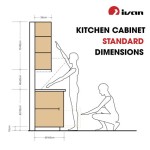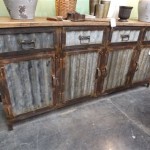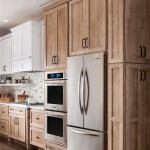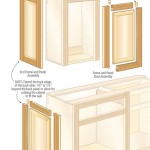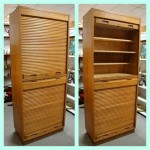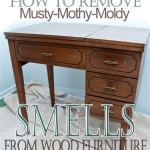Removing Grease Stains From Kitchen Cabinets
Kitchen cabinets, particularly those near the stove, are prone to accumulating grease stains. These stains, a byproduct of cooking oils and splatters, can be unsightly and difficult to remove if left unattended. Regular cleaning and appropriate techniques are essential to maintaining the appearance and longevity of kitchen cabinetry. Different cabinet materials and finishes require specific cleaning methods to avoid damage and ensure effective grease removal.
The presence of grease on kitchen cabinets is not merely an aesthetic concern. Accumulated grease can attract dust and other airborne particles, creating a sticky, grimy layer that becomes even more challenging to clean. Moreover, hardened grease can degrade the cabinet finish over time, leading to discoloration, cracking, or peeling. Addressing grease stains promptly and effectively is crucial for preserving the integrity and appearance of the cabinets.
Identifying the cabinet material and finish is the first step in selecting the appropriate cleaning method. Common cabinet materials include wood (various types like oak, maple, and cherry), laminate, metal, and painted surfaces. Finishes can range from glossy to matte, and may include protective coatings like varnish or lacquer. Using the wrong cleaning product or technique can damage the finish, resulting in permanent discoloration or requiring costly repairs.
Before attempting any cleaning method, it is recommended to test the chosen solution on an inconspicuous area of the cabinet, such as the inside of a door or a lower corner. This allows for assessing the solution's effect on the finish and identifying any potential discoloration or damage before applying it to more visible areas. A small, controlled test minimizes the risk of widespread damage.
Understanding Common Cleaning Agents
Several cleaning agents are commonly used for removing grease from kitchen cabinets, each with its own advantages and disadvantages. Choosing the right agent depends on the type of grease stain, the cabinet material, and the finish. These agents range from readily available household solutions to specialized cleaning products.
Dish soap is a mild, readily available cleaning agent that can effectively remove fresh grease stains. Its gentle formulation makes it suitable for most cabinet materials and finishes. To use dish soap, mix a small amount with warm water to create a soapy solution. Apply the solution to the greasy areas with a soft cloth or sponge, gently scrubbing to loosen the grease. Rinse the area with clean water and dry thoroughly with a clean cloth.
Baking soda is a mild abrasive that can help to lift stubborn grease stains. It is particularly effective for removing grease from textured surfaces or areas where grease has hardened over time. To use baking soda, create a paste by mixing it with a small amount of water. Apply the paste to the greasy areas and gently scrub with a soft cloth or sponge. Rinse the area thoroughly with clean water and dry with a clean cloth. It is important to avoid excessive scrubbing, as baking soda can scratch delicate finishes.
Vinegar is a natural degreaser that can help to dissolve grease and grime. Its acidic properties make it effective for loosening stubborn grease stains. To use vinegar, mix equal parts vinegar and water in a spray bottle. Spray the solution onto the greasy areas and let it sit for a few minutes. Wipe the area clean with a soft cloth or sponge. Rinse the area with clean water and dry thoroughly with a clean cloth. Vinegar can have a strong odor, so it is important to ventilate the area well while cleaning.
Commercial degreasers are specifically formulated to remove grease and grime from various surfaces. These products often contain stronger chemicals than household cleaning agents and should be used with caution. Always follow the manufacturer's instructions carefully when using a commercial degreaser. Wear gloves and eye protection to avoid contact with skin and eyes. Test the degreaser on an inconspicuous area before applying it to the entire surface. Ensure adequate ventilation when using these products.
Specific Cleaning Techniques for Different Cabinet Materials
The cleaning technique used to remove grease stains from kitchen cabinets should be tailored to the specific material and finish of the cabinets. Using an inappropriate technique can damage the finish or even the cabinet itself.
For wood cabinets, it is important to avoid excessive moisture, as water can damage the wood and cause it to warp or swell. Use a damp, not wet, cloth to clean the cabinets. Avoid using abrasive cleaners or scrub brushes, as these can scratch the finish. A solution of mild dish soap and warm water is generally safe for wood cabinets. For stubborn grease stains, a paste of baking soda and water can be used, but be sure to test it on an inconspicuous area first.
Laminate cabinets are generally more durable than wood cabinets and can withstand more rigorous cleaning. However, it is still important to avoid abrasive cleaners and scrub brushes, as these can scratch the laminate surface. A solution of mild dish soap and warm water is usually sufficient for cleaning laminate cabinets. For stubborn grease stains, a mixture of vinegar and water can be used.
Metal cabinets are typically resistant to most cleaning agents. However, it is important to avoid using cleaners that contain ammonia or chlorine bleach, as these can damage the metal finish. A solution of mild dish soap and warm water is generally safe for metal cabinets. For stubborn grease stains, a commercial degreaser can be used, but be sure to follow the manufacturer's instructions carefully.
Painted cabinets require gentle cleaning to avoid damaging the paint. Avoid using abrasive cleaners or scrub brushes, as these can scratch or remove the paint. A solution of mild dish soap and warm water is generally safe for painted cabinets. For stubborn grease stains, a paste of baking soda and water can be used, but be sure to test it on an inconspicuous area first. If the paint is old or fragile, it may be necessary to use a specialized paint cleaner.
Implementing Preventative Measures
Preventing grease stains from accumulating on kitchen cabinets is often easier than removing them. Implementing preventative measures can significantly reduce the frequency and intensity of cleaning required.
Regular cleaning is the most effective way to prevent grease stains from building up. Wipe down the cabinets near the stove after each use to remove splatters and spills before they have a chance to harden. Use a damp cloth or sponge to wipe the surfaces, and dry them thoroughly with a clean cloth.
Using a range hood while cooking can help to capture grease and steam before they reach the cabinets. Ensure that the range hood is properly installed and functioning correctly. Clean the range hood filters regularly to maintain its effectiveness. Consider upgrading to a more powerful range hood if necessary.
Placing a backsplash behind the stove can protect the cabinets from splatters and spills. Backsplashes are available in a variety of materials, including tile, glass, and stainless steel. Choose a material that is easy to clean and complements the kitchen décor. Regularly wipe down the backsplash to remove any splatters or spills.
Applying a sealant to the cabinets can help to protect them from grease and grime. Sealants create a barrier that prevents grease from penetrating the surface of the cabinets. Choose a sealant that is specifically designed for kitchen cabinets and follow the manufacturer's instructions carefully. Reapply the sealant periodically to maintain its effectiveness. Consider using a protective coating or wax on wood cabinets to provide an additional layer of protection.
Prompt attention to spills and splatters is crucial. The longer grease sits on the surface, the harder it becomes to remove. Immediate cleanup minimizes the stain's severity and prevents long-term damage. Use a clean cloth or paper towel to absorb the spill, and then clean the area with an appropriate cleaning solution.
By understanding the types of grease stains, selecting the appropriate cleaning agents and techniques, and implementing preventative measures, homeowners can effectively maintain the cleanliness and appearance of their kitchen cabinets. This proactive approach not only enhances the aesthetic appeal of the kitchen but also prolongs the lifespan of the cabinetry, ultimately contributing to the overall value and enjoyment of the home.

How To Remove Grease From Kitchen Cabinets 3 Methods Bob Vila

How To Clean Sticky Grease Off Kitchen Cabinets Ovenclean

Clean Kitchen Cabinets Off With These Tips And Hints

Best Ways To Clean Grease Stains Off Kitchen Cabinets

Get Grease Off Kitchen Cabinets Easy And Naturally

How To Clean Kitchen Cabinets Everyday Skate

How Remove Grease From Wood Kitchen Cabinets

How To Clean Grimy Kitchen Cabinets With 2 Ingredients

Removing Grease From Kitchen Cabinets House Cleaning Tips Safe S Clean

Degrease Kitchen Cabinets With An All Natural Homemade Cleaner
Related Posts

